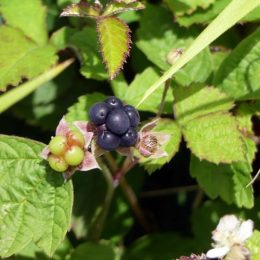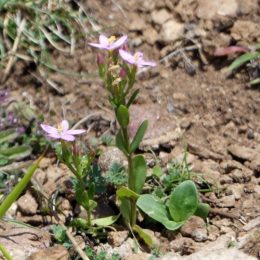Tags
Cinnabar moth, Conservation issues, crickets, dark green fritillary, grayling, Grayling (ssp. Thyone), hipparchia semele ssp.Thyone, Plejebus argus ssp. Caernensis, Red Admiral, Silver-studded Blue, Silver-studded Blue (spp.caernensis), small tortoiseshell, y Gogarth
July 14th – Great Orme
The great bulk of the west face of the Great Orme rises steeply from the shore of the Irish Sea; its scarred and fissured face testament to centuries of the relentless onslaught of invading weather fronts. Glancing upwards from its base it looks intimidating, barren save for a few patches of eroded grass and seemingly hostile as habitat for anything save the odd nimble Kashmiri goat. However, as in the best tradition of myths, legends and fairystories, looks can be deceptive and here-upon, not too far away, lies a magical kingdom populated by tiny beautiful creatures.
The creatures take the form of butterflies. Two diverse species have evolved and adapted themselves to survival in this unlikely place and have been recognised and classified as ‘sub-species’. One is a variant of the rare Silver-studded Blue, classified as Plejebus argus ssp. Caernensis and the other a variant of Hipparchia semele (Grayling), classified as (ssp.Thyone). Both are ‘dwarf races’ and considered to be endemic to the site.
The ‘butterfly kingdom’ spills into the Great Orme or y Gogarth Reserve owned and managed by the North Wales Wildlife Trust, which has no paths, but there is a narrow stony path along a ledge cut about a third of the way up the cliff, which is indicated on the photograph above as a line of wire netting that both marks its edge and keeps people safe and goats in. I walked alongside the West Shore from the town end and joined the path at the back of the Toll House, but if you are coming down from the other direction, the other end of the track is waymarked to your left. A word of caution – this is a very narrow, unevenly surfaced track, so take care.
The day was sunny but windy, conditions which bring out the butterflies but often keeps them low to the ground or amongst long grass stems. I wasn’t expecting to start seeing the little Silver-studded Blues as easily as I did, but there on a patch of red valerian below the ‘dangerous cliffs’ sign I spotted my first ones. Most were looking rather worn and a bit tatty, but I was happy to see them at all.
As I watched I spotted a pair coupled together who were then joined by two others with another fresher-looking male also heading their way. Unlike their cousins, the Common Blues, these smaller butterflies don’t zoom away at speed just as you’re about to press the shutter button, but flutter gently from place to place, tending not to fly any distance away. They seem to bask quite frequently.
The uppersides of males are a glorious vivid blue with a dark border. Females’ uppersides are browner with a row of orange spots; in this sub-species they also have a variable flush of blue that extends over the hindwings and the base of the forewings. The Silver-studded Blue takes its name from the light blue reflective scales found on the underside of most adults and which are quite visible when light reflects off them in fresh butterflies, but they wear off quite quickly as the butterfly ages and can be quite difficult to see. In the main, the undersides are a brownish-grey with black spots, a row of orange spots, and small greenish flecks on the outer margin. Males are similar to the Common Blue, which lacks greenish spots.
The Silver-studded Blue is a Priority Biodiversity Action Plan (BAP) species.
Generally they are found in close-knit colonies, most containing less than a thousand adults. Here on the Orme numbers fluctuate over the season, but may rise to a peak of a thousand or more. Today I met a warden and an assistant on the path that were assessing current numbers – in one spot alone they had counted 130 individuals, so despite the recent inclement weather, they appear to be doing OK.
The number of Graylings I saw also took me by surprise; in other locations I’ve been more than happy to come across the occasional one; along this path I encountered a good few patrolling the path. I’m hesitant to give a number as I have no idea how many times I might have seen the same one as it circumnavigated a territory. It could well be that the same one or two were circling me!
H. semele ssp. Thyone flies earlier than is usual with other races of Grayling, being on the wing towards the third week in June, and disappearing by the end of July.
I am not practised enough to be able to recognise subtle differences between species & sub-species of butterflies and have no desire to catch any to compare them, so I have taken points from Mr Thompson’s comparisons:
Hipparchia semele ssp. Thyone
♂ Strikingly smaller than any other British race of semele. Coloration is more uniform than in typical semele, with the pale areas more ochreous. Forewing spots are smaller than in other races, with the lower of the two frequently absent. Underside coloration duller and less contrasting than in the type, with the white areas of hindwings tinged with ochre. ♀ Also smaller than other races. Spots are smaller than in normal specimens.
The special butterflies were not alone here. In a small sheltered quarried out area at the side of the track more red valerian was attracting some larger visitors. I was most thrilled to see a Small Tortoishell, only the second I’ve seen this year and the first to stay put long enough to photograph.
There was a Red Admiral there too, a few Meadow Browns and a single Dark Green Fritillary that was repeatedly chased away by Graylings.
Another first sighting for this year was a Cinnabar Moth. I was musing just the other day about why I rarely see the adult moths when the distinctive yellow and black caterpillars are so numerous at this time of year; perhaps they don’t over-winter well? It was tricky to get even this less-than-brilliant image as it was fighting against the wind trying to stay on the cliff edge.
Wildflowers of the day:
Other insects

























Thanks Emily, the butterflies are well-monitored and they seem to be holding their own, so we can but hope they can maintain that. There are definitely fewer butterflies to be seen in many parts of the UK than there used to be. Let’s hope things can be turned around for future generations!
LikeLike
I’m glad the butterflies are doing well in their remote kingdom. I don’t see as many now as I remember seeing as a child.
LikeLike
Thank you. It is certainly a privilege to have the butterflies so close by and fairly easily accessed too, you just have to get the timing, and the weather right to see them at their best. I was perhaps a week or so late for the blues.
LikeLike
How wonderful to have two special butterflies in one place and to be able to see so many. Lovely post and photos, Theresa.
LikeLike
Thank you Patricia, I find butterflies totally fascinating too and often lose track of time seeking them out and watching them. It’s the perfect way to stay ‘in the moment’ and focus on some of the beauty in the world.
LikeLike
Butterflies mesmerize me. Such beautiful pictures. What an interesting day exploring their unusual habitat or kingdom.
LikeLike
Oh very beautiful and so well captured.
LikeLike
Thank you for your kind comments, I try to do justice to the beautiful insects I see, with more success some days than others!
LikeLiked by 1 person